Review: Apple iPhone 6 for Verizon Wireless
Sep 25, 2014, 11:30 AM by Eric M. Zeman
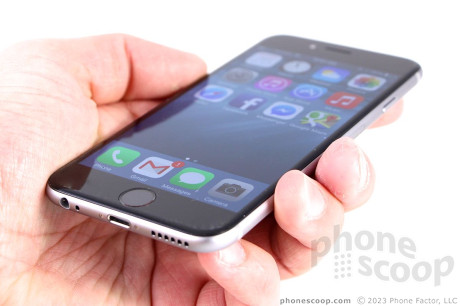
The Apple iPhone 6 is the smartphone for everyman, a Goldilocks device that is sure to please the widest range of people. It has a few advantages over the larger 6 Plus, but some disadvantages, too. Here is Phone Scoop's in-depth report.
Form
It It Your Type?
The iPhone 6 is the smartphone Apple lovers have always wanted. If you're looking for a truly modern device that places a strong emphasis on elegance and refinement, the iPhone 6 fits the bill. It's a well-crafted piece of hardware that should appeal to the masses.
Body
Apple debuted two new iPhones this year, the 6 and 6 Plus. This 6 is the smaller of the two, though it's bigger than every other iPhone before it. It relies on the same design language as the larger 6 Plus. In fact, little differentiates the two devices apart from their footprints.
Apple changes the iPhone design every other year. The iPhone 5s looked pretty much the same as the iPhone 5, so Apple was due to debut brand new hardware with the iPhone 6; that's exactly what it did. The 6 and 6 Plus look quite different from earlier iPhones.
Apple stuck to a minimalist design language. The 6 uses a mix of aluminum, glass, and plastic (eek!) to form the outer skin. The shape of the device is simple and straight-forward. It is elegant and refined. The metals look and feel good. Apple tapered the edges of the glass so it meets the aluminum frame in a smooth seam. With the rounded side edges, the overall effect creates a smooth device that's comfortable to hold and use.
The iPhone 6 is what I'd call an average-sized phone. It falls in line with most other flagships in terms of its length and width, but it is thinner and lighter than many of them. The 4.7-inch screen is easier to reach with one hand, though it still includes the Reachability trick offered on the 6 Plus. (Tap the home button twice and the all the content of the screen slides down so your thumb can reach it.) The 6 truly feels great in the hand, more so than any other iPhone. I can say the same when comparing the 6 to devices such as the HTC One and Galaxy S5. Pockets? Easy. Even the pockets of your skinny jeans. If you're averse to large phones, have no fear; the iPhone 6 is the Goldilocks iPhone. It's just right.
As is typical of iPhones, there are thick bezels above and below the screen. Apple is sticking with its over-sized, circular Home button below the display. In keeping with Apple's design principles, it also likes balance. This means the bezel above is as thick as the bezel below. The bezels along the sides are slim, but not the slimmest I've seen. Bottom line: the screen is swimming in more framing than some competitive phones (think Galaxy S5). The Home button, which also acts as a fingerprint reader, is a depression in the front surface. It is dead simple to find and use. Travel and feedback is good, but I've felt better. There's a tiny slit in the glass above the screen for the earpiece speaker. The user-facing camera is little more than a pinhole.
Apple has long favored a three-button setup on the left side of the phone. There's a switch at the top that sets the phone in either ring or silent modes. It's a good switch. Below that are two separate buttons for the up and down volume functions. The buttons are dashes that have great profiles and even better travel and feedback. The up button doubles as a shutter release when using the camera.
Apple wisely moved the screen lock / power button from the top to the right edge. Though the 6 isn't as large as the 6 Plus, the screen lock button could be difficult for some to reach were it on top. The button itself is of decent size and shape, and works really well. The tray for the SIM card is built into the right edge, as well. You need a paperclip or SIM tray tool to eject the tray. Most people will probably never bother with it. The iPhone 6 takes a nano SIM card.
Both the stereo headphone port and Lightning port are on the bottom of the phone. It's annoying that the Lightning port is proprietary and doesn't work with standard USB cables. However, it is among the strongest, easiest ports in which to jam a cable. It's especially useful that the Lightning port is reversible and accepts the cable in either orientation. There are also drilled holes on the bottom for the single, mono speaker. It's a bit of a shame that Apple didn't include stereo speakers.
The back surface is mostly aluminum, but there are lines running from side to side that help frame out two plastic panels at the top and bottom. The plastic panels, which allow the wireless radios to function better, are a bit of a let down. Apple used glass for these panels on the iPhone 5 and 5s. The plastic just isn't up to snuff, and I'd even call the seams somewhat uneven in places. This is the one real detractor of the hardware. Apple should have stuck with the glass, even if it added a little weight.
The upper plastic panel houses the camera module, which is the first on an iPhone to protrude from the body of the phone. I've seen some criticism online about this design choice, and I find it a bit unwarranted. The number of smartphones that have protruding camera modules is innumerable. The slight protrusion means the iPhone 6 gets a better camera. It is the smallest of compromises. As with all iPhones, the phone is sealed up tight; there's no access to the battery at all, nor is there support for expandable memory.
The iPhone 6 is a really good piece of hardware from Apple. It's not without compromises, but that's par for the course these days. No phone is perfect.
Performance
Screen
The iPhone 6 has a 4.7-inch screen with 1334 x 750 pixels. If you're thinking this is an odd resolution, you're right. It only exists to improve compatibility with apps made for older iPhones. The 4.7-inch display is smaller than those offered by other flagships, such as the GS5, HTC One, LG G3, and Moto X. Those competing models also go with full HD (or, in the G3's case, quad HD) resolution. That said, the iPhone 6's screen looks really, really good. It's not quite as impressive as the display of the 6 Plus, but it still packs in enough pixels to exceed 720p HD. Viewing angles are great. There's no brightness drop off and no color shift. I really like that colors are accurate and not over-saturated as on some AMOLED screens. I was able to use the iPhone 6 outdoors under a sunny sky with no trouble. It's a very good screen.
Signal
We tested the Verizon variant of the iPhone 6. It did well on Verizon's LTE 4G network in and around the New York City area. It maintained a connection to 4G without fail, even in areas with weak coverage. It always showed several bars of signal strength and was able to connect calls and pass data with no problem no matter where I took it. The iPhone 6 didn't drop any calls during nearly a week of use, nor did it miss any. Data speeds were consistently good. I noticed only the slightest of slowdowns in LTE when in weak coverage areas. Most of the time it was really fast.
Sound
The 6 on Verizon performs about as well as the 6 Plus did on AT&T. That is to say, phone calls were slightly below average in terms of quality and volume. The quality of voices coming through the earpiece ranged between awful and decent; it never impressed. Earpiece volume is not where it should be. It's better than older iPhones, but doesn't match other flagship devices, such as the HTC One. I was able to hear calls in coffee shops and when hanging out with several friends, but screaming kids and a loud TV were enough to drown it out. The speakerphone actually improves voice quality a little bit, but is also short of excellent when it comes to volume. I was able to maintain conversations in my home and office, but road noise made it harder to hear in the car. Those with whom I conversed through the 6 said I sounded far away and somewhat muffled.
Ringtones are audible in your home or office, but crowded coffee shops made the 6 hard to hear. I wouldn't be surprised if people missed calls because they couldn't hear the ringer. On the flip side, the vibrate alert is among the strongest ever. In fact, it's too strong. The point of a vibrate alert is to be somewhat subtle. There's nothing subtle about the 6's vibrate alert. You can hear it loud and clear in a range of settings. Apple needs to dial it back a bit.
Battery
The 6 makes significant improvements in the battery department. I was able to coax an entire day out of the 6, though I often went to bed with just 20% power left. In other words, regular users shouldn't have a problem getting from breakfast to bedtime on a single charge. This is somewhat better than the iPhone 5/5s, which could kill off a battery closer to dinnertime. Power users might run into trouble slightly sooner than 11PM. The 6 Plus gets about a half-day more uptime from a single charge, so that might be worth weighing if you're on the fence about which iPhone to choose. Competing models from Samsung, HTC, and LG offer slightly better battery life.
iOS 8 doesn't offer advanced power-saving tools, but it does offer a guide to help you discover what's been chewing through your battery life. This way you can deactivate or disable those apps to conserve power.
Basic
Editor's Note: Since the 6 runs the exact same operating system as the 6 Plus, much of the below text has been copied from Phone Scoop's review of the 6 Plus. Rest assured, we tested every function of the 6 to make sure it behaves in the same way.
Menus
The iPhone 6 runs iOS 8. We've reviewed all the new features in iOS 8 in depth here. Here's a shorter recap.
The lock screen has become a much more useful space on iOS over the years. Users can tweak the settings to allow for as much or as little interruption as you want. Notifications can be splashed all over the lock screen, or hidden away for another time. The new extensions allow many more apps and services to offer actionable notifications on the lock screen, such as Skype 5.5, which is a nice improvement. There is only one app shortcut, however, and that's to the camera.
The home screens haven't changed at all between iOS 7 and iOS 8 on the 6. Apps are stored in a rigid grid on the home screen panels. The good news is apps can be placed in folders, and you can place as few or as many apps on each home screen as you want. There are no widgets in iOS 8 (at least not like Android), and home screen content is static, not dynamic.
The settings menu hasn't changed at all, really. It is a long list of tools laid out in text with buttons to turn them on or off, or adjustments that require more in-depth tweaking. There are a lot of settings, but they are easy to sort between.
The Notification shade drops the "Missed" tab from iOS 7 and adds compatibility with more apps. Developers can now create widgets that land in the Notification shade and offer new and changing content. It's a half measure, as far as I am concerned. It's nice to have dynamic content *somewhere* outside of apps, but it doesn't match what's available to Android and Windows Phone devices.
Control Center is a really useful tool for adjusting key device settings on the fly. You can access it by swiping up from just about any screen. It includes access to the wireless radios, flashlight, music controls, sharing, and brightness.
iOS 8 ran perfectly on the iPhone 6. I didn't run into any problems, no matter what app I used. I didn't experience any crashes, hangs, or lags. The 6 has a 64-bit A8 processor with Apple's M8 motion coprocessor to help handle all the sensors.
Like the 6 Plus, the iPhone 6 doesn't offer true side-by-side multitasking. It has a fast app switcher, but you can't use two apps at the same time. Some devices in this category (Galaxy S5) do.
The 6 doesn't suffer from the same app optimization problem the 6 Plus does. That means most third-party apps I saw ran well and looked good.
Calls and Contacts
Apple made few changes to the calling and contact apps this time around. New features include support for Wi-Fi Calling and VoLTE. WiFi Calling is already available from T-Mobile and VoLTE is already available from Verizon. I enabled VoLTE on the iPhone 6 and verified that it was active on my account with Verizon. I used the 6 to call several people I know who have the Samsung Galaxy S5, which is also VoLTE capable. Two phones with active VoLTE service should pass calls over the data network rather than the voice network. VoLTE calls are by default in HD Voice. To be quite honest, I couldn't discern any difference in voice quality between what should have been VoLTE calls and normal voice calls. However, it is possible that the VoLTE service didn't actually work. There's no indicator or other signal to tell users that calls are in HD or using VoLTE.
The other big new function is called Continuity. With Continuity enabled, users of the 6 Plus who also happen to have a Mac or iPad operating on the same Wi-Fi network will be able to answer calls on their computer (requires OS X Yosemite) or iPad. This feature worked well on my hardware. I was able to answer and initiate calls from on my iPad - which were actually connected via my iPhone 6. Neat.
The contacts app hasn't really been updated at all as far as I can tell. It's a bit stark, and I wish it had more hooks into social networks and other apps.
Messaging
Apple made huge improvements to its core messaging apps. Email supports new actions that make managing your inbox faster and easier. These tools work well on all iOS 8 devices, not just the 6. For example, you can swipe left or right to see a list of secondary actions for deleting, marking, moving, or flagging your emails. The email app functions in landscape orientation, but it doesn't have the cool extra panel that's available on the 6 Plus. It just shows your messages without the preview pane. I found typing emails works better when in portrait mode, as the keyboard takes up about 40% of the screen when in landscape orientation - making it harder to see your entire message.
The 6 also loses the split-panel view in iMessage that's available to the 6 Plus. When you hold the 6 in landscape mode, the texting app shows either a list of conversations or the current conversation rather than both at the same time.
The messaging app gains some new multimedia functions. It's now a snap to send video and audio snippets, as well as attach selfies. The audio tool, for example, requires a press-hold-swipe gesture that initiates the recording and then sends it automatically.
Apple made significant changes to the keyboard app in iOS 8 that make it much better. The keyboard has a new word-prediction engine. As you type, several words will appear in a line above the keyboard itself. I was often able to compose entire responses using these suggestions. The keyboard also adds emoji for enhancing messages and conversations. Typing messages on the 6 was a pleasure thanks to the wider screen (when compared to iPhone 5/5s). I felt my thumbs had much more room for typing, and Apple's spelling- and word-prediction engines helped me ramp up my typing speeds. iOS 8 adds support for third-party keyboards, too.
Ostensibly, iOS 8's new support for extensions (hooks for developers to connect apps) will improve how iPhone owners are able to share content with other apps/people - including via the email and messaging apps.
FaceTime is still FaceTime.
Extras
Media
Apple revised the music, video, and iTunes apps heavily in iOS 7, and gave them little more than a passing glance in iOS 8. The behavior of the apps themselves is mostly the same. iTunes offers an incredible array of content, and it is all laid out cleanly and in a way that's a breeze to browse.
The biggest update to the iTunes Store is support for Family Sharing. It allows iPhone users to more easily enable other iOS devices to access content purchased through iTunes. I found it easy to turn on and use. It includes built-in parental controls. Family Sharing also includes a shared iCloud photo library and location.
AirPlay lets iOS devices push content (music, movies, etc.) to the Apple TV and other iOS devices. The newest version doesn't require that both devices be connected to the same Wi-Fi network; now it truly works peer-to-peer, meaning your iPhone 6 can pair directly with another iPhone or Apple TV. I found it worked flawlessly.
Camera
iPhones have never had dedicated camera buttons, and the iPhone 6 is no different. You can launch the camera from the lock screen thanks to a shortcut, or open the app via the traditional method: tap the camera icon on the home screen.
Apple carried the camera interface over from iOS 7, but did add a few new tricks. The camera has new timer and time-lapse capture functions. The camera also adds exposure lock. This tool is non-obvious and tricky to use. A long press on the viewfinder focuses the camera in a specific area of the subject and bases exposure on that area. Then a little "sunlight" icon appears. You can slide this icon up and down to change and lock the exposure to something higher or lower than what it generated on its own.
The basic UI of the camera still requires you to swipe between different shooting modes, such as pano, square, regular, video, slow-mo, and time-lapse. I wish it were faster to choose between these modes. Still, the camera focuses and snaps pictures in an instant. Apple's camera software makes it as easy as possible for the greatest number of people to get good shots.
I didn't notice any performance differences between the iPhone 6 Plus and iPhone 6 in terms of the camera's speed or functionality.
Photo Gallery
The photo gallery is much more useful for manipulating images thanks to several additions to its feature list, though none of them are specific to the iPhone 6.
Images are organized by date/location, and can also appear in albums. Further, you're now able to search based on date or location. The gallery has a nifty tool that puts all the videos into a single album. You can also "favorite" photos with a simple tap. Favorited photos are added to their own album for easier viewing.
Editing tools are also more robust. You can add filters, reduce red-eye, or use the auto-enhance function. The crop tool has added some really nice features. It now allows you to rotate photos just a little bit. This is great if you want to straighten out a crooked horizon in the background. The editing tools also allow you to alter the aspect ratio of the image after the fact. The app adds more fine-tune controls over images, such as exposure, contrast, and color.
Last, Apple has expanded the ability to share photos with other apps directly from the photo gallery.
Photos
The iPhone 6 has an 8-megapixel sensor, the same as the iPhone 6 Plus. The one major difference is that the 6 Plus uses optical image stabilization, while the 6 uses digital image stabilization. It's a slight difference in the hardware, but can lead to big results out in the real world. OIS helps negate the effects of your hand if it's moving around, although it can't do anything to stop the motion your subject.
In theory, the iPhone 6 should capture images that are slightly less sharp in certain situations. For example, the 6 Plus is able to use the camera hardware to steady the lens when there's small movements in your hand. The camera cal also adjust a couple of f-stops on shutter speed. The iPhone 6 uses software to compensate for such movement. In the real world, I couldn't spot any difference in the sharpness of images I captured with the 6 and 6 Plus. At least not yet. Perhaps over time, when I have a larger sample of photos from which to judge, differences will become apparent. At the moment, though, the pictures I took with the 6 and 6 Plus look the same to my eyes.
I was very pleased with the pictures. The 6's sensor may not capture as many pixels as competing models, but dang does it know how to get exposure and white balance accurate. I didn't see a single problem in any of the images I captured. Everything appeared true-to-life as far as color and lighting was concerned. Images were generally sharp. The camera app uses something called Focus Pixels to help capture great shots. Basically, the Apple-designed image signal processor that's part of the A8 can provide the sensor with more information about each image. The end result is better and faster autofocus. The 6 also works well in low-light situations, even without the flash.
Despite its lack of advanced tools, the iPhone 6 does a great job at capturing good images most of the time. Anyone upgrading from an earlier iPhone will be really happy.
The user-facing camera captures 1.3 megapixels. Outdoor and other well-lit shots looked good, but grain started to appear in indoor or low-light environments.
Video
The iPhone 6 captures 1080p HD video and can do so in slow motion if you want. The video I captured with the 6 looks fantastic, and the slow-motion footage is just awesome to watch. I thought exposure, focus, and white balance were all spot-on. I didn't see any grain in video I captured outdoors, except when shooting in the shade during twilight. There were no obvious differences in the video quality when comparing the iPhone 6 to the 6 Plus.
I think most people will be thrilled with the video they capture with the iPhone 6.
Apps
Apple doesn't allow bloatware on its devices. That means Verizon wasn't able to cram any unwanted apps on the iPhone 6. Apple does, however, stick plenty of its own apps on board. This year, Apple installed its entire productivity suite on the 6 and 6 Plus. That means you have Keynote, Numbers, and Pages. These apps take up a significant amount of room (over 1 GB combined). So do GarageBand and iMovie, which are also preinstalled. I love the latter two, but I don't use Keynote, Numbers, and Pages. Thankfully you can remove them if you want to. Other apps, like Notes, Reminders, Stocks, Weather, Newsstand, iBooks, and Podcasts can't be removed.
Apple Pay
Apple Pay hasn't launched yet, so we were unable to test it. Once it goes live, Apple Pay will allow the 6 to make mobile tap-and-go payments at select retailers around the country. We'll fully test this feature when it launches in October.
Bluetooth
The 6 supports Bluetooth 4.0. LE. I had no trouble pairing to a wide range of devices, including iPads, Macs, speakers, headphones, and my car. Phone calls passed through a mono headset sounded below average (and worse than the AT&T model). Quality was so-so, and volume was not what it needs to be. Music sounded excellent when pushed through my fave Bluetooth speaker and headphones.
Pairing with other Apple devices for AirDrop (passing files) was a breeze and worked perfectly.
Browser
The browser works well on the iPhone 6 thanks to better support for landscape mode. My favorite features is how Safari now treats tabs. When the 6 is rotated on its side, all the open tabs show up along the top of the browser address bar, just as they do on desktops and the iPad. This makes it much, much easier to jump between open web sites.
Safari performed amazingly well on the 6 when used on both Verizon's LTE network and on Wi-Fi. It's a much more robust and speedy browser. It does a great job handling web sites and delivers them in the blink of an eye.
Clock
A large digital clock appears on the iOS 8 lock screen when you press either the home button or lock screen button. It's white and cannot be customized. I wish the font were thicker. As always, you have to choose your wallpaper carefully. The clock is almost impossible to see on top of light-colored wallpapers, but it stands out well enough on dark-colored wallpapers.
Health / HealthKit
This is one feature that doesn't yet quite work. The actual Health app doesn't do much on its own. It has a stark interface that, when devoid of data, is easy to figure out. However, without any HealthKit-enabled apps, there's no way to get data to the Health app to consume it. The app does allow you to create a medical profile for yourself that can be made available to others in the event of an emergency. For now, however, that's it. We'll revisit this section of the review when the HealthKit-enabled apps are finally available.
Maps
Apple Maps behaves largely like it did when it debuted in iOS 6 two years ago. The change it most needed to make was to increase accuracy, and on that front Apple has made significant strides. Apple Maps offers voice-guided turn-by-turn directions - as long as you're driving. It still doesn't do mass transit. When you ask it to find a train schedule, it suggests you try third-party apps. Ouch. Maps worked perfectly with the 6's GPS radio and location tools. It pinpointed me in about 5 seconds each time I launched the app.
Siri
Siri now responds to the "Hey, Siri!" catchphrase. This means you don't have to long press the home button to launch Siri. I found Siri is more accurate than ever, and better able to handle spoken requests.
Wrap-Up
The iPhone 6 is a very good smartphone. It may not match some competing models spec-for-spec, but it has closed the gap significantly.
The 4.7-inch screen is excellent and Apple fit it into a gorgeous piece of hardware that's thin, light, and comfortable to use. It will easily go with you anywhere and look good doing it. Build quality is as good as it gets. The iPhone 6 makes strides in battery life, though the 6 Plus offers at least an extra half-day. The iPhone 6's performance on Verizon's network was quite good. I am still disappointed with the quality of phone calls, but the iPhone 6 isn't necessarily alone in that respect.
Unlike the 6 Plus, the 6 can be used with one hand. If you're on the fence about the 6 or the 6 Plus, the two real differentiators are one-handed use and battery life. The 6 Plus has better battery life, but it harder to use, where the 6 is easy to use, but offers less battery life. It's a tough choice, no doubt.
iOS 8 is adept and I experienced speedy performance across the board on every app I tested. Further, the iPhone 6 has a fantastic camera and produces videos worthy of evening news broadcasts.
I think the iPhone 6 compares well to other flagships, but it definitely lags in some specs, such as screen size/resolution. Given the new powers built into iOS 8 and the overall quality of the iPhone 6, you can't go wrong with this handset.
Comments
VoLTE
(continues)
Difference between OIS and Non-OIS images should have been quantified.
VoLTE: Simultaneous Voice and Data
VoLTE is a battery killer on the iPhone
VoLTE voice quality?


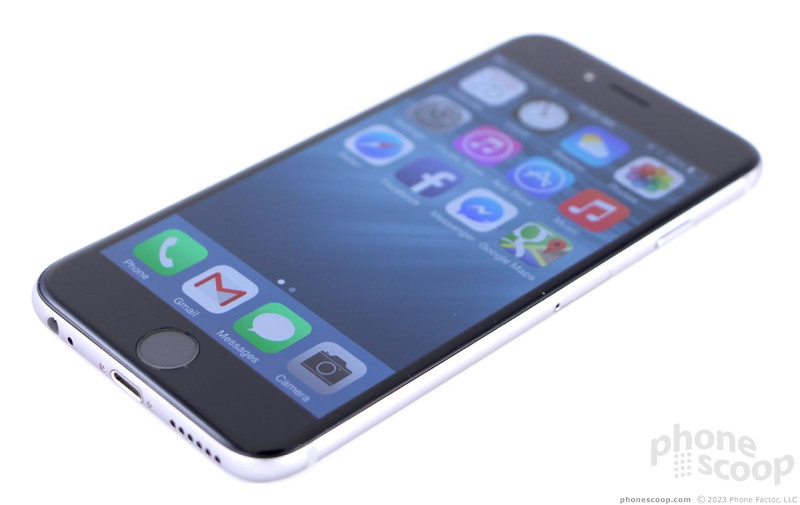




















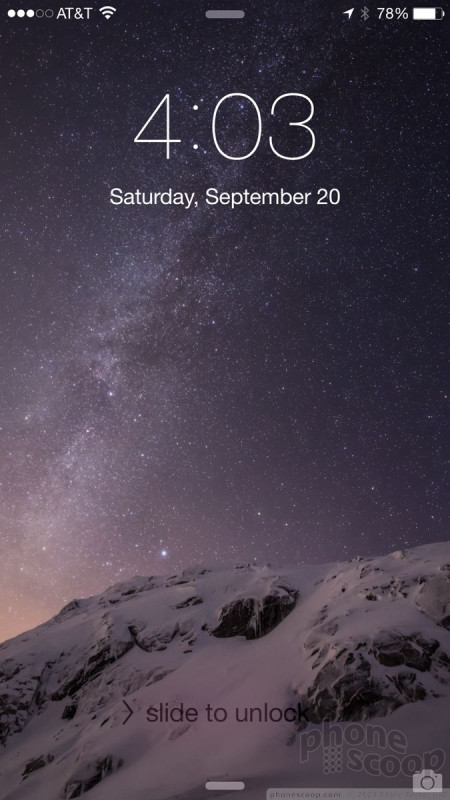








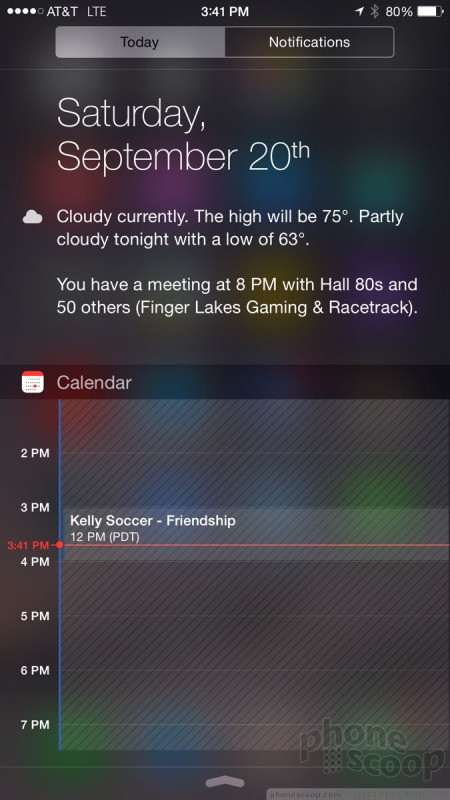




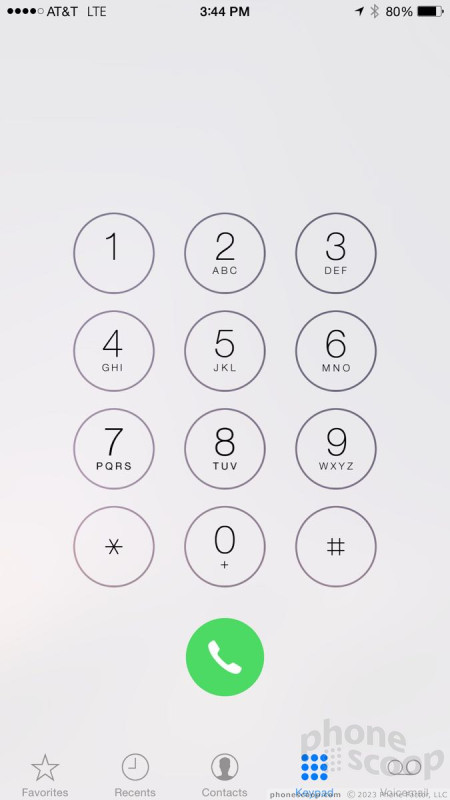




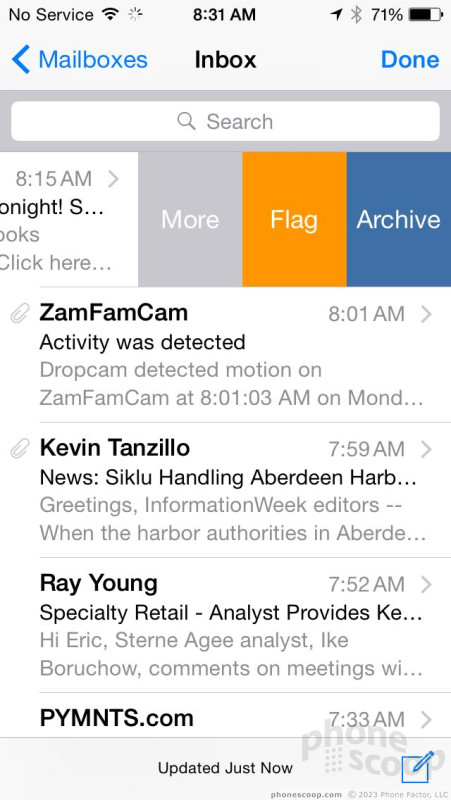






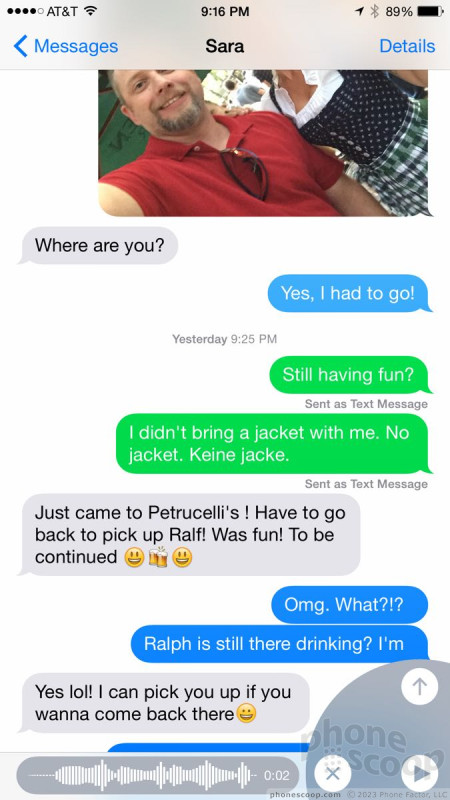




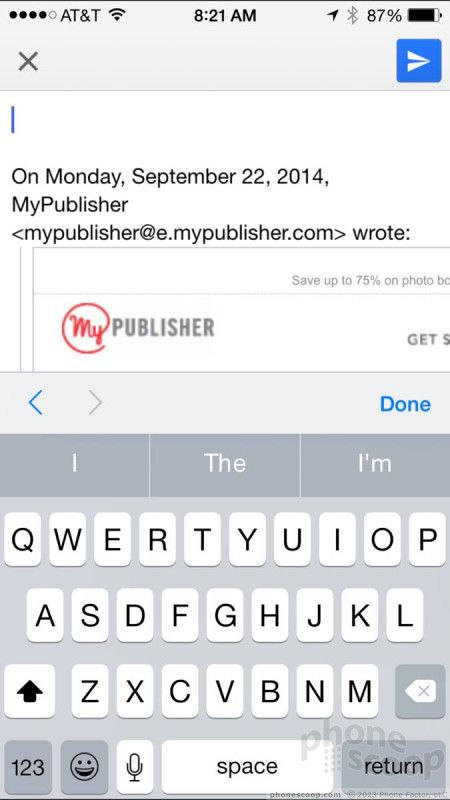




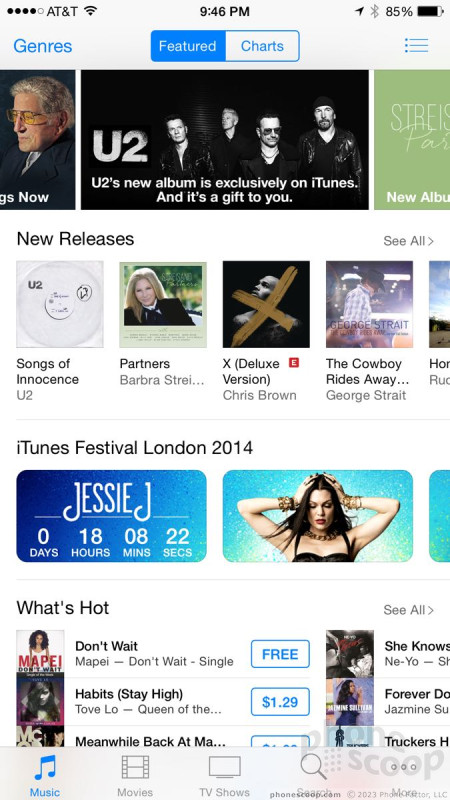








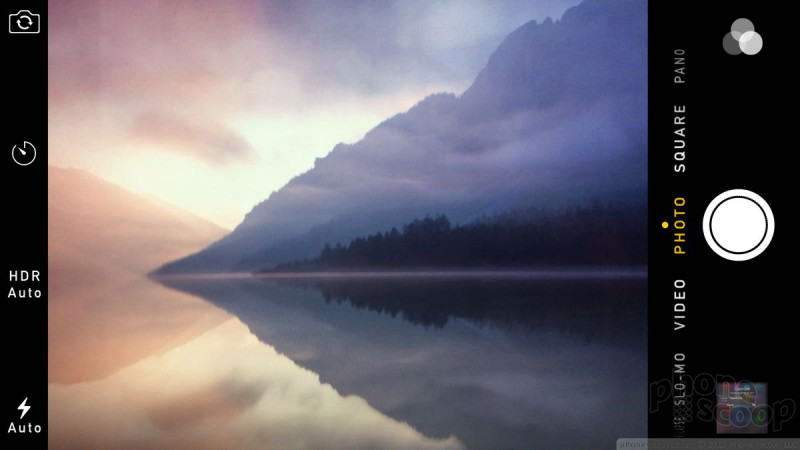







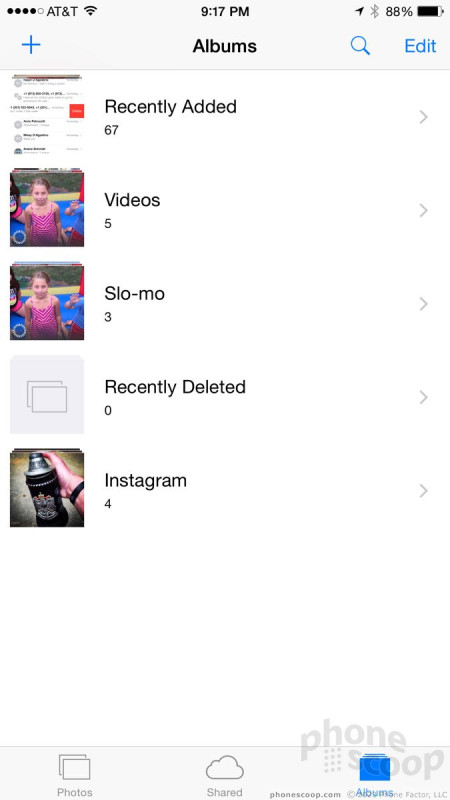























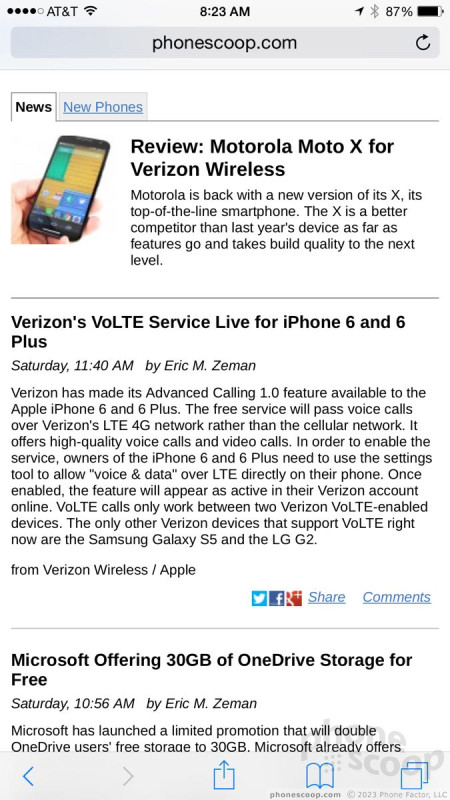




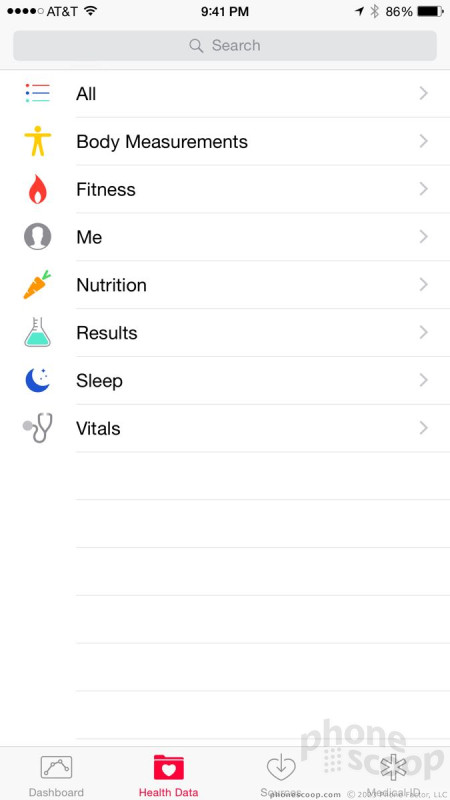




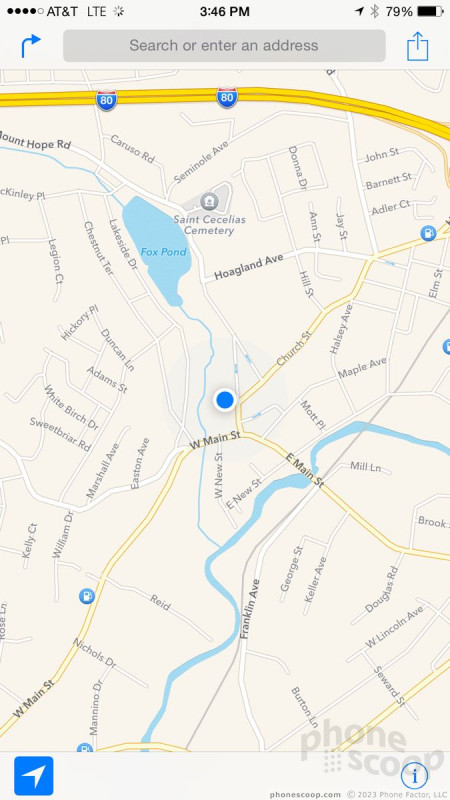




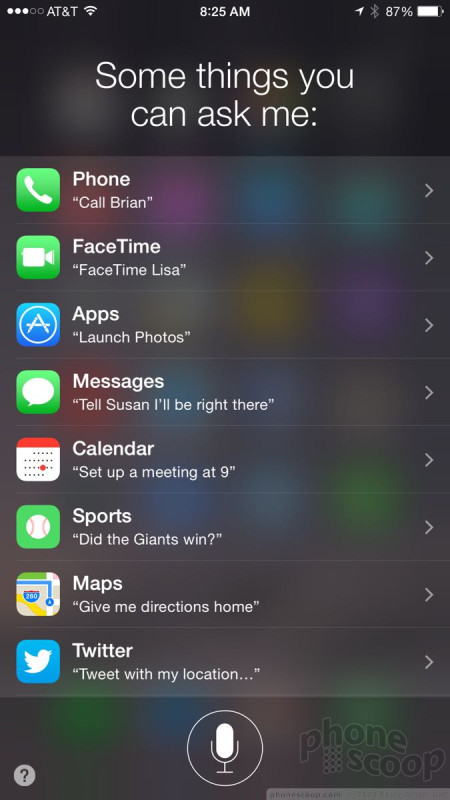




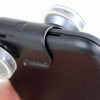 Review: Otterbox Universe and Olloclip 4-in-1
Review: Otterbox Universe and Olloclip 4-in-1
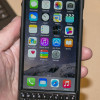 Hands-On: Typo 2 Keyboard
Hands-On: Typo 2 Keyboard
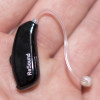 ReSound Smart Hearing Aid Connects To Your Phone
ReSound Smart Hearing Aid Connects To Your Phone
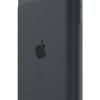 Apple-Made iPhone 6 Battery Pack Graces Apple Store
Apple-Made iPhone 6 Battery Pack Graces Apple Store
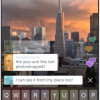 Twitter's Periscope App Powers Live Video Streaming
Twitter's Periscope App Powers Live Video Streaming
 Apple iPhone 6
Apple iPhone 6




